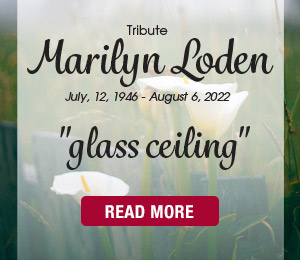
Company: The Winters Group
Innovation Title: Engaging in Bold, Inclusive Conversations® Facilitator Certification Program
Company Website: https://www.wintersgroup.com/bold-inclusive-conversations/
Year Introduced: 2018
Executive Summary
Today more than ever, leaders and employees alike must have the skills and competencies to engage in dialogue on historically polarizing and “off-limits” topics. Whether leaders like it or not, employees are talking about and thinking about the issues of the day impacting employees’ level of productivity, engagement, and psychological safety.
The Winters Group’s Engaging in Bold, Inclusive Conversations® Facilitator Certification program is not a check-the-box program; nor is it intended to be a deep dive on specific diversity topics. It offers a starting point for understanding and developing the skills and competencies required to engage in Bold, Inclusive Conversations®. Through the program, participants have access to predesigned, licensed learning experiences that can be leveraged internally within their organizations to equip learners with the skills and competencies required to engage in Bold, Inclusive Conversations® at work.
This highly interactive, skill-building learning experience leverages the methods shared in the books, We Can’t Talk about That at Work! How to Talk about Race, Religion, Politics, and Other Polarizing Topics and Inclusive Conversations: Fostering Equity, Empathy, and Belonging across Differences, both by Mary-Frances Winters, to provide participants with the content, tools, and competencies necessary to strengthen their organization’s capacity to engage in Bold, Inclusive Conversations®.
Throughout the three days of the program, participants:
- Learn the content, tools, and competencies necessary to strengthen their capacity to facilitate and engage in Bold, Inclusive Conversations®.
- Understand the model for engaging in Bold, Inclusive Conversations® as outlined in this book.
- Explore the sociopolitical climate and its impact on the workplace.
- Enhance facilitation skills necessary for cross-cultural conversations and polarizing topics.
- Enhance their self-understanding and awareness of potential obstruction spots that might impede their effectiveness as a facilitator.
- Connect the learning to organizational objectives (e.g., “bring your whole self to work,” engage with empathy, create an inclusive culture).
- Practice facilitating Bold, Inclusive Conversations® learning content.
In one client example, the global health care company Merck has certified 21 facilitators through our Engaging in Bold, Inclusive Conversations Facilitator Certification program. Using The Winters Group licensed content, they have delivered training globally across the organization, reaching over 3,000 employees. In querying participants on what gets in the way of engaging in bold, inclusive conversations in the workplace, most shared fear and the lack of education. Merck’s goal with this learning experience is to build both confidence and competence in having Bold, Inclusive Conversations® across the organization. Participants give high marks on applying the program to the job; shifting behaviors in how they show up at work; delivering value for themselves and others; and benefiting from the overall experience. In another example, our most recent exit survey showed that 100% of participants were satisfied with the learning experience, with 87.5% indicating that they were “very satisfied.”
Since its launch in 2018, our Engaging in Bold, Inclusive Conversations® Facilitator Certification program has grown from twice-a-year offering to the public to a quarterly program that’s expanded to include private offerings. With public programs consistently selling out, the program impacts even more people when participants take back what they’ve learned to their organizations. Sales of licensing materials have grown by 25% over the last five years. To date, a total of 462 learners hailing from 19 different organizations have been certified by the program. For more information, go to https://www.wintersgroup.com/bold-inclusive-conversations/.
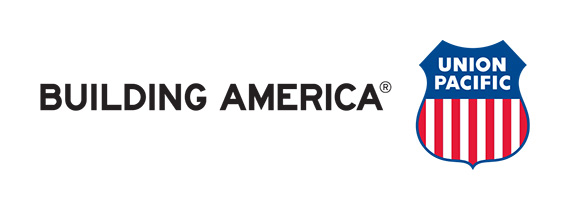
Company: Union Pacific Railroad
Innovation Title: Living Library
Company Website: www.uprr.com
Year Introduced: 2023
Executive Summary
What makes this program or initiative unique?
Union Pacific Living Library: We all have a story to tell.
In the summer of 2023, Union Pacific’s Diversity and Inclusion team launched the Living Library.
Employees can participate by checking out a “human book” where they are able to listen to passionate railroaders tell their personal stories in a one-on-one setting to better understand how life experiences shaped their unique perspectives.
The Living Library is very much like a regular library where people go to check out books, however, the only difference is that the books are all UP employees who have generously agreed to speak about their experiences. Readers can choose a topic they wish to know more about and check out a human book to have a conversation. When the reader is finished meeting with the book, they can return it and check out another that is available.
More than three dozen human books are currently available for check out. Their life stories include overcoming obstacles and challenging experiences such as childhood poverty, illness, adoption, immigration, loss, neurodiversity – and so many more deeply personal journeys. Additionally, some of the human books cover lighter topics and events like unique hobbies, great achievements, and some unusual life experiences.
What was the purpose or goal?
The purpose is to utilize storytelling to drive empathy, understanding and exposure throughout the workforce to create an environment where every team member can see themselves belonging and succeeding at Union Pacific.
What are the benefits and positive changes of this program or initiative?
Storytelling may not seem like a hard-hitting business method, but it is quite the opposite. Research shows that storytelling is one of the most underutilized, yet best approaches for change management. Something happens to our brain when we listen to stories. We can be transported into the characters themselves. We feel what they feel – joy, fear, embarrassment. This is known as neural coupling – a learning technique we, as humans, used to survive by learning from other human’s experiences. The physiological impacts of storytelling will help drive empathy throughout our workforce to promote inclusivity.
What are indicators or metrics that demonstrate the innovation is effective?
Around 300 employees participated and attended the launch of the Living Library program at our corporate headquarters. Now that the project has been available for over a month now, 48 books have been “checked out” of the library and 2,200 employees have engaged with the Living Library web page and book catalog thus far! Since launching, more and more employees have stepped up to be a human book with two more rounds ready for release.
How is it driving growth and if so in what areas?
The Living Library is driving growth within our retention rates. When employees feel seen, heard, and connected, they stick with a company. The Living Library creates an avenue for employees to make genuine and real connections with other employees at Union Pacific.
Who does it impact?
The Living Library impacts 33,000 Union Pacific team members across our 23-state network. Every employee is encouraged to tell their story and be a human book and every employee has the opportunity to check out a book. It provides space for employees to share their stories and understand that it is ok to bring their whole selves to work.
By Wema Hoover, Former Chief Diversity Officer, Principal & CEO Be Limitless Consulting, LLC

Throughout my career, I have benefitted countless times from the wisdom and support of so many caring women mentors. They took the time out of their days to give me advice, advocate for me, “block and tackle” when necessary, and help me unlock the confidence to bring my full self to work with no apologies.
But I’ve also seen firsthand how men can play a powerful role in helping women to advance – and to push through the imposing psychological barrier of imposter syndrome.
We need men on our side. And they should be because imposter syndrome is a universal challenge, something that sneaks into our minds no matter what we may have accomplished and makes us feel like we don’t belong, that we’re not good enough.
It’s a persistent self-doubt that affects even the most successful of us.
It’s that gnawing feeling that you have to fit into a mold that wasn’t made for you. It’s the fear that you’re not good enough, and at some point, someone’s going to figure it out, call you out, and finally expose you as a fraud.
I make it a point to share openly – and especially with our next generation of leaders who are starting out in their careers – that I’ve experienced it myself. I think of those times I was considered for key promotions that could turbo-charge my career to new heights and allow me to really have an impact.
But my first instinct wasn’t to be excited about a new professional adventure – it was to worry that I wasn’t ready, somehow ill-equipped, and not prepared for a more senior role despite all of my proven experience and track record of success.
I remember one example of imposter syndrome in action quite vividly. I was working in a highly scientific business unit, and I was the organization’s OD lead. I was hesitant to speak up in meetings, feeling like I didn’t quite fit in with the highly technical, male-dominated environment.
One day, a colleague and mentor finally pulled me aside. He told me that my insights weren’t being heard in meetings. As he put it, all my talent was invaluable, but it does nothing if I don’t bring it to the forefront and communicate it. I knew that I needed to make a change.
It finally hit me – I had to be bolder. More intentional. Unforgiving when it came to making my voice heard. This shift in mindset transformed the way I showed up at work. I stopped seeing my role as complementary and started viewing it as a core necessity and essential for the team’s performance.
From that point forward, I became much more deliberate and intentional about speaking up and claiming my rightful position in all rooms and spaces that I entered.
Men as Allies
It goes without saying that we should all be able to put ourselves in the shoes of those around us. I have found, however, that there’s something about fatherhood – especially raising daughters – that seems to allow many men to better understand the challenges that women still face in the modern workplace. It certainly shouldn’t take parenthood to unlock the empathy gene, but I can’t help but notice that so many of the men who are ready to stand up and lead happen to be fathers.
This phenomenon highlights the power of personal experience. Simply put, fathers of daughters often develop a deeper understanding of the obstacles women face in the workplace. They witness firsthand the challenges their daughters encounter – and refuse to perpetuate an environment that makes them feel anything less than capable of their full potential. And in time, they begin to support and drive systemic changes.
Parenthood has a way of changing our perspective in ways big and small. Suddenly, they’re asking themselves if they would tolerate their daughters working in organizations that silence them or relegate them to the back bench. They see the talent, skills, uniqueness, and competence of their daughters – and know they soon will be facing many of the same challenges as their colleagues.
Men, like women, can struggle with imposter syndrome, but they might have a different set of challenges in recognizing and addressing it. For all our progress in creating more inclusive workspaces, many men have come of age in environments that reinforce traditional leadership styles that demand they mask any feelings of imposter syndrome. In fact, they often are rewarded for concealing it.
To better support the women on their teams, men who are prepared must actively seek to understand and acknowledge the conditions that create an environment where imposter syndrome and its effects on their female colleagues are perpetuated. By doing so, they can employ practices that foster the conscious inclusion, growth, and advancement of women.
How Men Can Be Allies
Whether or not they happen to have children, men have a unique role to play as advocates for equality, diversity, and tapping into the best talent regardless of gender in their organizations. Some steps men can take to begin stepping up as allies in the workplace:
1. Celebrate and Acknowledge Women Leaders:
Men can start by making it a priority to actively spotlight women leaders – including those who are leading well and are trailblazing in their roles or with their teams. To achieve this, organizations can consider implementing regular recognition programs or events that showcase the contributions of women leaders within and outside of their organization. I know some will disagree with this idea of setting aside recognition for women – but until we’re competing on a level playing field, creating a pathway for recognition is so important for helping emerging women leaders accumulate the “wins” that build a career, demonstrate their talent and allow other women to see a version of themselves as having success and making an impact – because the hard-earned truth is that you “cannot be what you do not see.”
2. Actively Sponsor and Advocate for Women:
It’s not enough to merely mentor women in the workplace; active sponsorship and advocacy are essential for supporting their career advancement. To empower women in their careers, male leaders and colleagues should proactively support and champion their accomplishments by being visible and vocal in their recognition. But this doesn’t just happen on its own and does not have to be formal in nature. Simply, connecting women with influential advocates who can help them navigate their path to leadership by speaking to their skills, abilities, successes, and potential is all that is needed to be effective and advance their careers.
3. Welcome Differences – and Challenge Yourself:
Acknowledge that there is no protype (it’s certainly not men-only) of leadership and that successful and effective leadership comes in many genders, ethnicities, abilities, and approaches. Women comprise more than half the world’s population, yet this is rarely reflected on executive teams or around boardroom tables. But we bring a wealth of unique perspectives, ways of working, and abilities to the workplace, and these differences can significantly enhance team performance. Organizations should not only welcome these differences but actively seek out and integrate diverse perspectives into their ways of working and operating for these behaviors to be adopted by employees and put into practice each and every day.
Eliminating Imposter Syndrome, Together
Imposter syndrome affects each and every one of us at one time or another, no matter our gender, race, ability, background, or how far we have come.
The power to actively address, challenge, and ultimately eliminate imposter syndrome resides within each of us.
We must uplift, encourage, and speak to the abilities, experiences, and accomplishments of others, especially those who may not fit the “mold” of what successful leadership looks like.
This paradigm shift will establish new examples and role models of successful leaders that others will not only see but recognize as the norm. More importantly, that will allow us to confidently see and believe in ourselves with the knowledge that we belong in every industry, level and role, addressing imposter syndrome head-on.
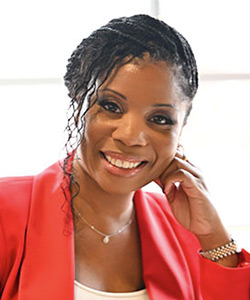
Wema Hoover
Wema Hoover is Principal & CEO of Be Limitless Consulting LLC and is a DEI global thought leader and executive coach and former Chief Diversity Officer for several Fortune 500 companies.
By Christine Miller

In the 2020s, the vast majority of corporations are at least talking the right talk when it comes to the importance of diversity.
But we still don’t always see that reflected on corporate boards and in the rooms where the major decisions are made. That’s my take-away from a recent study that found a marked decline in the number of Fortune 500 board seats going to underrepresented groups like African-Americans and women. Only 34% of such appointments last year went to someone from an ethnic or racial minority – a steep drop from 41% in the prior year. This decline was largely driven by a significant drop in the percentage of black appointees.
So what gives?
One Step Forward, Two Steps Back
It feels like a true “one step forward, two steps back” moment after the steady progress of recent years in Corporate America, slowly but surely looking and functioning more like, well, America. This means we need to prioritize the full scope of what it means to be diverse – yes, that includes ensuring your team is balanced with respect to gender and color. But it also encompasses so much more – identities, age, race, culture, beliefs, personal and professional backgrounds, etc. The most far-sighted and strategic leaders that I have worked with recognize that diversity is not a narrowly defined box to be checked but the key to gaining a competitive advantage.
I have seen it myself in my time as a board member for organizations like the biopharmaceutical innovator Iveric Bio. As a black female executive, I brought a variety of different perspectives to the table, extending well beyond my race and gender. While my deep healthcare experience played a role in my appointment, I wasn’t an ophthalmology expert – and perhaps someone who would not naturally hit their radar. But our board was fortunate to benefit from a forward-thinking chair who made it a priority to push recruiters to seek out diverse candidates. A very real benefit to considering someone like me is because of my nonlinear healthcare background, which included experience in very different functions like commercial and launch expertise, as well as R&D and supply chain. It’s because of her stepping up and identifying this as top-of-mind that my candidacy surfaced.
She understood that more diverse teams could see around corners that others can’t. They are more in touch with consumer segments that may have gone ignored for too long. They influence, challenge, and help push teams to new heights – leaving behind competitors where everyone looks the same, lives in the same zip codes, and brings the same type of experience to the table.
The Power of Cross-Pollination and Wide-Ranging Viewpoints
This shouldn’t be news to anyone. By bringing in new directors with different backgrounds and unique insights outside their verticals, companies can take advantage of leadership who are asking a different set of questions and who are offering a wider range of ideas and uncommon approaches that can help them tackle problems more effectively. Companies are starting to see why they benefit from this approach. A 2023 Heidrick & Struggles survey showed 77% of board seats were being filled by individuals who come from outside the same industry. By bringing in directors with different backgrounds and unique insights outside an organizations’ primary verticals, companies can take advantage of leadership that asks a different set of questions and offers a wider range of ideas and uncommon approaches. This approach can help companies tackle problems more effectively, and despite the recent numbers, I know more organizations are starting to recognize these benefits.
Achieving diversity on a board requires that we consider the most important element: being innovative and open-minded in our thinking. While we may have a profile and criteria for narrowing down candidates, it’s essential to be creative in evaluating them. We shouldn’t just engage in “checking the box,” instead, we should prioritize a broader, more complete definition of diversity, which includes breadth of experiences, backgrounds, and seek differentiated perspectives compared to existing board members.
When leaders from various genders, cultures, ages, backgrounds, and experiences come together, they bring a comprehensive view to strategic decision-making. This breadth of knowledge and insight fosters innovation and creativity, leading to better problem-solving and strategic planning. By challenging the status quo and encouraging new ways of thinking, diverse boards can propel companies forward in today’s rapidly evolving business landscape. Not always easy to do, especially in the boardroom where there may be a natural inclination toward caution and approaches steeped in long-standing board traditions.
Evolving Culture
How do we push past those traditions that serve to effectively gatekeep new voices from being amplified? To ensure diverse voices are heard in the boardroom, boards need to evolve their board culture.
On a personal level, I know my expertise adds value, but I know firsthand that it can be an intimidating prospect to be an “only,” to look around a room and not see anyone else that looks like you. A big piece of the board diversity challenge is that many accomplished and talented black women self-select out of contention for board seats simply because of a sheer lack of role models to emulate who look like them. At least, that’s the perception, notwithstanding powerhouses like Mellody Hobson – chair of the Starbucks board – and other inspiring examples who should get a lot more attention. All the more reason for organizations to cultivate cultures that emphasize openness, tolerance of dissent, and a broadminded spirit to hearing one another out. One of the things that attracted me to the Iveric board from the beginning stemmed from my initial interviews with the company’s CEO. I could tell that he cared about fostering an environment where people (and diversity) could thrive. The company culture he built resonated with my own personal values. It’s important to consider a board that aligns with and embraces diversity as a core value throughout its organization.
Let’s be clear: we have seen steps forward. There is definitely more diversity overall, and many more women now at the table in most boardrooms I walk into, which is a positive development. We’ve also made progress in increasing the representation of people of color over the long run, notwithstanding the setbacks we have seen this year. But this progress has come far too slow, perhaps a testament to the cautious, “slow and steady” approach many enterprises adopt. Companies often struggle with change, particularly when it disrupts established power dynamics. But it shouldn’t be seen as a disruption. In fact, it’s a necessary transformation if companies want a sustainable future.
There are clear differences between boards that embrace diversity and those that do not, and those disparities only grow clearer over time. From the outside looking in, diverse boards often exhibit a broader range of perspectives and a more comprehensive understanding of the market and customer base. From the inside looking out, diverse boards benefit from increased creativity, innovative problem-solving, and more robust discussions.
The Path Forward
It’s true that introducing greater diversity to company boards comes with its own set of challenges. It can mean a significant culture shift to not only invite new perspectives into the room but guarantee they feel heard and included.
- Leaders need to ensure that everyone’s POV is fully solicited and considered. Companies often have long-standing traditions and a prevailing mindset that can be resistant to embracing new voices and perspectives.
- It’s important to have a well-defined decision-making process in place. As with any executive management decision, having a clear process ensures that all perspectives are considered and the best decisions can be made collectively.
- By fostering a culture of open dialogue, mutual respect, and active listening, boards can create an environment where diverse voices are encouraged and valued.
- Finally, don’t neglect the committee level as well. Getting a diverse candidate on a board is a crucial first step, but it falls short without extending diversity to key sub-committees such as audit, executive, governance, and others. True progress happens when diverse representation permeates all decision-making levels.
Having a more diverse board has greatly improved decision-making for me and the other businesses I’ve worked with. In my own board service, we have faced numerous difficult decisions and tough calls, but with diversity around the table, we have ensured that everyone was heard. We engaged in robust discussions, considering each person’s point of view. This healthy debate allowed us to weigh different perspectives and make well-informed decisions.
I think of an instance in which we had to make a significant decision regarding the future of the company. The goal was to ensure a successful product launch, and we debated whether to go at it alone, seek a partnership, or transact with the company. Throughout the process, the board stayed open to different possibilities and engaged in continuous debate. The decision was never preordained and was made through diverse viewpoints and careful consideration, arriving at the best path forward with the information available to us, resulting in a hugely successful strategy and outcome.
Diversity on company boards is not only a matter of social responsibility but also a strategic imperative for success. The organizations that succeed will be those that recognize diversity as a key enabler of success, not simply a box to check.

Christine Miller
Christine Miller is President and CEO of Melinta Therapeutics. Christine is also Board Chair of the Antimicrobials Working Group (AWG), serves on the board of BioNJ, and recently completed service as a Board Director for biopharma company, Iveric Bio, now an Astellas company.
By Stephen Young

Many thanks to Profiles in Diversity Journal for asking for perspectives on my latest book, The Power of Evolved Leadership.
At its heart, the book takes a scalpel to many of the dusty cliches and aphorisms that have guided leadership practices for decades.
In part, the book suggests redirecting the use of ill-defined metaphors and common practices and replacing them with clear and actionable applications.
For example, the use of rote expressions and directives such as, “Think outside the box” should be jettisoned from our workplace nomenclature.
During my seminars, when I hear people use that expression, I ask them if they could please, “Show me the box and describe what it really means to think outside of it.”
Is the message simply suggesting to do things differently? If so, is just doing it differently all we need to do to accomplish its mission? As it exists in a vacuum, the aphorism carries no meaningful value. Nevertheless, it is blindly accepted albeit with its unclear destination.
We must reexamine many of our ritualistic habits and replace them with well-defined practices for evolved leadership.
Logic, clarity and reason must become the epicenter of our leadership process. We cannot allow habits and emotion to cloud making the best decisions. This connects to another key point in the book, “Confirmation Bias.”
Confirmation bias often interferes with the process of getting to the best solutions. When we hold a belief or position on how something should be managed, the process of searching for confirmation of that belief unwittingly overrides any evidence that might prove it false.
“This book brilliantly illustrates the transition from transactional management to transformative leadership emphasizing the significance of evolving behaviors for today’s dynamic workplace.”
– Charles Good, President, Institute of Management Studies
“The power of evolved leadership is for every leader who dreams to enable others to perform to their full potential.” Steve’s model provides a clear roadmap to help leaders hone their skills toward leadership excellence. It will certainly transform leaders but more importantly, drive commitment, engagement, loyalty and a desire to succeed among teams. There can hardly be a more crucial and selfless calling on leaders today.”
– William B. Dodero, General Counsel, Senior Vice President, Bayer
Our ego tends to insert, and assert, itself becoming an accelerant that fuels our confirmation bias. It prevents us from seeing things through an evolved lens. Interestingly, our egos, like our brain, are both powerful yet fragile. It can cause us to place more energy on saving face than seeking truth.
The book shines a light on this precarious paradox.
The number one obstacle inhibiting leadership evolution is EGO.
Feelings often fog facts. Good decision-making must focus the lens in the direction of data and move it to the forefront of clear vision and our actions.
Another universally accepted staple is the term, “collaboration”—often heralded as a cornerstone of an inclusive corporate culture.
But hidden beneath its shiny surface, ‘collaboration’ can be a harbinger for destructive egos. The very structure of a collaborative process requires that groups come together to share perspectives and ideas.
“Steve Young is a foremost expert on leadership. The powerful content of his seminars consistently generates audience response one does not normally experience. His sessions at Oracle still hold the record of having the highest ratings on leadership and inclusion…I wish this had been available years ago! As with his live presentations, the book pulls you in, holds your attention, and continues to inspire to the very end.”
– Gerry Borja, Senior Diversity & Inclusion Manager, Oracle
But groups are made up of individuals. Unwittingly, the act of collaboration can awaken the Kraken of competitiveness. The collaborative mission may have been for the group to develop the best ideas, but individuals also have personal career aspirations. Instinctively, people can be driven to make it known that their contributions have greater value than others.
For this reason, we are often encouraged to suppress that competitive desire, be more humble, and check our egos at the door. The paradox is, too much humility can make you invisible. What an interesting balancing act. Failing to effectively self-promote can push you into the quicksand of lost opportunity.
Failing to effectively self-promote can push you into the quicksand of lost opportunity.
This book offers perspective on the ways to balance these conflicting pursuits. Its mission is to build evolved leadership skills using a wide variety of actionable new channels. Some of the concepts introduced include:
Connective Language
The art of deciphering the unspoken. There is no correlation between being a good communicator and being effective at building connections.
Person Versus Persona
The value and purpose of code switching. Evolved leaders must have the agility to access each audience, or individual, with whom they interact and adapt their persona, while never being untrue to their core values.
PMVV – Performance, Motivation, Vision, Values
The four pillars of evolved leadership.
Deontological vs Teleological Business Ethics
Distinguishing the difference between what is right for you, what is right for the business, and what is ethically right.
Humility Versus Productive Advocacy
The Congeniality Winner never gets the crown. No matter how talented or skilled you are, you’ll ultimately be the tree in the forest that no one hears if you don’t make others aware of the strengths, skills, and value you bring to the business.
Axiological Skills for Evolved Leadership
Turning the gears doesn’t necessarily move you forward. Actions and behaviors must be metered against their discernable value.
The Power of Evolved Leadership also incorporates personal interviews with some of today’s top corporate leaders who share their perspectives on this topic. It provides clear, actionable advice, insights and tools for becoming an evolved leader who inspires and motivates the performance of others and leads them into the future.
Explore these new concepts and learn how to immediately apply them in all your future interactions.
“Working for twenty-seven different leaders in my career, and my own leadership journey, have prompted me to reflect on what attributes differentiate great leadership skills from bad ones. Stephen Young’s new book, The Power of Evolved Leadership, explores an insightful and progressive model of leadership through his novel lens of PMV leadership, which covers performance, motivation, vision, and values. Stephen shares, in his captivating style, his wisdom and thought-provoking insights on evolved leadership, based on real and actionable corporate experiences.”
– Bernard Lauwers, Finance Director, International Monetary Fund
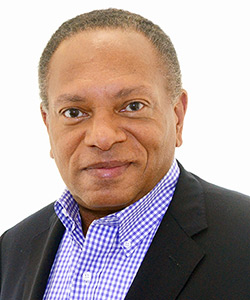
Stephen Young
Stephen Young is the Senior Partner of Insight Education Systems, a management consulting firm specializing in leadership and organizational development services. As a recognized leader and foremost expert in this field, Mr. Young frequently consults with senior executives and management teams of Fortune 500 companies.
By Alissa Hsu Lynch

It’s Time to Address the Asian American Leadership Gap is a thought-provoking perspective on how to break the “bamboo ceiling” in corporate America as an Asian American Pacific Islander (AAPI). Hsu Lynch shares her personal experience and concrete advice on how AAPI’s can fight against bias and stereotypes, build relationships with power brokers, and stay true to their cultural heritage – improving the leadership equity gap in Fortune 1000 companies.
When actress Michelle Yeoh made history in 2023 by becoming the first Asian to win an Academy Award for Best Actress, she boldly proclaimed, “For all the little boys and girls who look like me watching tonight, this is a beacon of hope and possibilities. This is proof that, dream big, and dreams do come true.” Her rallying cry resonates for every Asian woman with dreams of fulfilling her career aspirations and especially for Asian women in the corporate world. It’s a good reminder that having more Asians in positions of power can inspire others to achieve the same.
Numerous studies demonstrate that companies with more diverse leadership teams deliver better business results. Yet despite gains over the past decade, Asian Americans represent only 3% of executives, even though they are well represented as middle and senior managers. Progress in the corporate boardroom has also been slow, with Asian and Pacific Islanders (AAPIs) comprising only 4% of Fortune 1000 board members, with Asian women at a minuscule 1.5%.
Asian Americans are the fastest growing demographic in the United States and make up 13% of the professional workforce. So why aren’t more Asians – particularly Asian women – reaching the highest levels at the largest companies in America?
The reality is the so-called “bamboo ceiling” persists for AAPI leaders, and we still have biases to overcome and ceilings to break to achieve equity in the top levels of leadership. Let’s look at some of the barriers holding AAPI leaders back and suggestions for overcoming them.
Barrier #1: The invisible minority stereotype
The Model Minority Myth stereotype that all Asians are smart, hardworking, and nice is a double-edged sword that carries the unspoken implication that Asians are also weak, passive, and are “the invisible minority.” When I was a mid-level manager, I completed a 360-degree feedback program that opened my eyes to blind spots I had as a leader. Some of the feedback included that I was “all business” and that my team didn’t feel like they knew me. This surprised me because I was taught by my Chinese parents that hard work pays off and this had always served me well before. I needed to dispel the Model Minority Myth for myself.
Solution: Embrace being seen
I was fortunate to have mentors and coaching support from my company, and I realized that leading teams requires more than having a strong work ethic. I learned that sharing more parts of myself–including that I was a professional dancer prior to my business career, and that I was a mom of two kids trying to find the right balance between work and family–would help me become a more effective and authentic leader. Importantly, I adopted both the strong cultural values instilled by my parents and my own voice and story to better connect with others.
Whether you aspire to become a senior executive or serve as a corporate board director, it’s important to understand and define your unique value proposition. “We each have diverse experiences, capabilities, and perspectives that we bring to the table. While the Asian cultural norm is to be humble, we need to get comfortable with creating more visibility so that we can be considered for advancement. Developing a thought leadership strategy is a good way to amplify your presence and help you communicate your value proposition through multiple channels.

Barrier #2: Lack of role models
Seeing is believing, and having more Asians in leadership roles can inspire others to achieve the same. During my career, I did an international assignment in China. Unlike in the United States, there were many more role models in the Asia Pacific region–strong, successful Asians in executive roles, who each had a different leadership style, background, and path to success. However, in the U.S., there are too few role models when only 3 of the S&P 500 company CEOs today are Asian women–AMD’s Lisa Su, Arista Networks’ Jayshree Ullal, and Vertex Pharmaceutical’s Reshma Kewalramani. AAPIs–especially young, Asian American women–are among the least likely racial groups to feel that they belong and are accepted in the U.S., including in the workplace. Over half say this is due in part to not seeing others like themselves in positions of power.
Solution: Activate your network and sponsorship
Because AAPI leaders may not have as many natural connections as other groups, we need to be intentional about building our networks. Start by tapping into your personal and professional networks to identify leaders in the roles you seek and reach out to get their advice and to let them know what your career goals are. To obtain a board seat, especially – where the majority of open board seats are filled by word of mouth through the personal networks of CEOs, board members, investors, and search firms – it’s even more critical to activate and grow your network.
In addition, cultivating sponsors is important. I would not have achieved the career success I’ve enjoyed without having sponsors who advocated for me. I’m grateful to the senior leaders and board members who acted as champions in selecting me for opportunities and speaking up for me when I wasn’t in “the room where it happens.” Attaining more sponsorship for Asian Americans is an important strategy to help address the equity gap.
Barrier #3: Systemic Bias
In the workplace, AAPIs are least likely to become executives, with white professionals twice as likely to be promoted to management. Systemic bias persists, with over one-third of Americans (37%) believing that racism and discrimination against Asian Americans are key factors preventing their promotion to senior corporate positions. The underrepresentation is even more stark in the boardroom. Alarmingly, 67% of Fortune 500 boards have no Asian directors. No doubt corporate boards need to look beyond the C-suite to identify candidates and fill their pipeline with qualified Asian directors, but the reality still emphasizes C-Suite experience for board recruitment. This creates a larger barrier to entry for AAPIs compared with their peers. The lack of diversity in executive roles perpetuates systemic biases and stalls efforts to bridge the equity gap.
Solution: Challenge the status quo
To address this systemic bias, society as a whole, especially in corporate America, must adopt a proactive and collaborative approach. Companies, boards, and recruiters need to reshape their thinking and challenge the status quo. It’s time to redefine what it means to be “qualified” for leadership roles, by breaking free from the constraints of traditional C-Suite requirements and welcoming new perspectives to the boardroom. Broadening the definition of relevant leadership experience can lead to the inclusion of diverse, qualified AAPI candidates. Furthermore, focused leadership development programs and sponsorship can help accelerate advancement of AAPI individuals into executive positions and board roles. By fostering an ecosystem that values diversity and inclusivity, we can start to dismantle systemic bias and ensure equitable representation of AAPIs at all leadership levels.
It’s our time
The value of diversity in the C-suite and corporate boardrooms can no longer be disputed. Improving equity unlocks a powerful opportunity for corporations to better understand and reflect the world’s evolving cultural landscape, accelerate innovation and investment to grow market share among the fastest-growing consumer group in the U.S., and create new role models for the generations to follow.
For Asian American professionals to break the bamboo ceiling, we must be like bamboo itself.
Michelle Yeoh closed her Oscar speech thanking her family and all the people who “let me stand on your shoulders, giving me a leg up so that I can be here today.” To achieve equity for Asian Americans in the top corporations in America, we must work together to create opportunities for AAPI leaders and manifest the change we wish to see in the world.
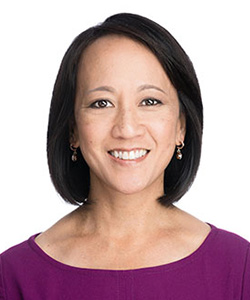
Alissa Hsu Lynch
Alissa Hsu Lynch is a board member, Entrepreneur-in-Residence at DigitalDx Ventures, and a former executive at Google and Johnson & Johnson.

For more than two decades Profiles in Diversity Journal has showcased and honored individuals who have blazed new trails, led the way, mentored others, advanced diversity and inclusion in the workplace and the community, and excelled in their chosen fields. PDJ is proud to recognize Black Leaders with our fourth Black Leadership Awards.
The 45 profiles that appear in this issue recognize and celebrate the outstanding achievements of our fourth group of Black Leaders. Each award recipient has also answered some personal questions about their life and written an essay that will give you, our readers, the chance to get to know these trailblazing individuals a little better.
Welcome to PDJ’s fourth annual Black Leadership Awards.
2023 Black Leadership Award Winners
- AAA Northern California, Nevada, and Utah (AAA NCNU) – Kamili Moreland – Executive Vice President, Chief People Officer, and General Counsel
- Akin – Ike Emehelu – Partner
- Akin – Virgil A. Miller – Senior Policy Advisor
- AMD (Advanced Micro Devices) – Karmen Clark – Human Resource Business Partner, Sr. Manager
- AMD – Chudy Roosevelt Nwachukwu – Senior PCB Technologist, Data center GPU
- AT&T – David C. Williams – Assistant Vice President
- Avenue5 Residential – Lorri Oliver-Goldmann – Vice President of Diversity and Inclusion
- Barilla – Relonda Snipe – Senior Human Resources Manager
- BDO USA – Angelique Scott – Industry Specialty Services Senior Manager
- Circana Inc. – Boris L. Oglesby – Executive Vice President & Practice Leader
- Circana – Cecilia B. Ogude – Global Head of Diversity, Equity and Inclusion
- Colgate Women’s Games – Cheryl Toussaint – Meet Director
- Curaleaf – Tyneeha Rivers – Chief People Officer
- Dechert LLP – Vincent H. Cohen Jr. – Global Managing Partner
- Epiq Global – Phil Hardy – Project Manager
- Fannie Mae – Sharifa A. Anderson – Senior Vice President and Chief Diversity and Inclusion Officer
- Fannie Mae – Elonda Crockett – VP, Automation and Process Excellence
- Freddie Mac – William Bagley – VP, Enterprise Supply Chain
- Freddie Mac – Angela Locke – VP – Human Capital Strategic Partners
- GEHA, Inc. – John E. Brown, Jr. – Chief Operating Officer
- Gibbons P.C. – Robert L. Johnson – Chief Diversity Officer/Corporate Group Director
- Gilbane Building Company – Yvette N. Stevens, P.E., PMP – Vice President, Director of Economic Inclusion
- HaystackID – Vazantha Meyers – Vice President, Discovery Services
- Heartbeat – Stephanie K. Robinson – Account Director
- Heartbeat NYC – Stanlisha Shaffer-Berry – Associate Director, Production
- Latham & Watkins LLP – Danielle Conley – Partner and Chair, Women Enriching Business Committee
- Latham & Watkins LLP – Kirsten Jackson – Partner
- Lincoln Financial Group – Rashanda Harris – Vice President, Life Underwriting – MoneyGuard
- Lincoln Financial Group – Stafford L. Thompson, Jr. – Senior Vice President, Life & Executive Benefits Business Management
- Moss Adams LLP – Tony Caldwell Jr. – Assurance Manager
- New American Funding – Melissa G. Mason – Branch Manager
- New American Funding – Alicia Norwood – Vice President of Construction and Renovation Lending
- New American Funding – Brenda Robinson – Branch Manager and Senior Loan Officer
- New York Life – Carlos B. Vicent – Vice President, Head of Business Solutions
- Norton Rose Fulbright – Jamila S. Mensah – Partner
- Project Bread – Khara Shearrion – Senior Director of SNAP Outreach Programs
- Sandia National Laboratories – David W. Gibson – Deputy Lab Director, Chief Operating Officer
- Sandia National Laboratories – Larry P. Thomas – Chief Diversity, Equity, & Belonging Officer
- Sanford Heisler Sharp, LLP – Schwanda Rountree – Co-Managing Partner
- Sterne, Kessler, Goldstein & Fox – Lestin Kenton Jr. – Attorney/Director
- The Winters Group, Inc. – Mary-Frances Winters – Founder and Chief Executive Officer
- Union Pacific Railroad – Cerwin T. Fleming – General Manager of Transportation – Chicago Service Unit
- Wells Fargo – Drinal Foster, SHRM-CP, PHR – Senior Vice President, Workforce Engagement Leader
- WilmerHale LLP – Lauren Moore – Partner
- WilmerHale LLP – Kevin Prussia – Partner
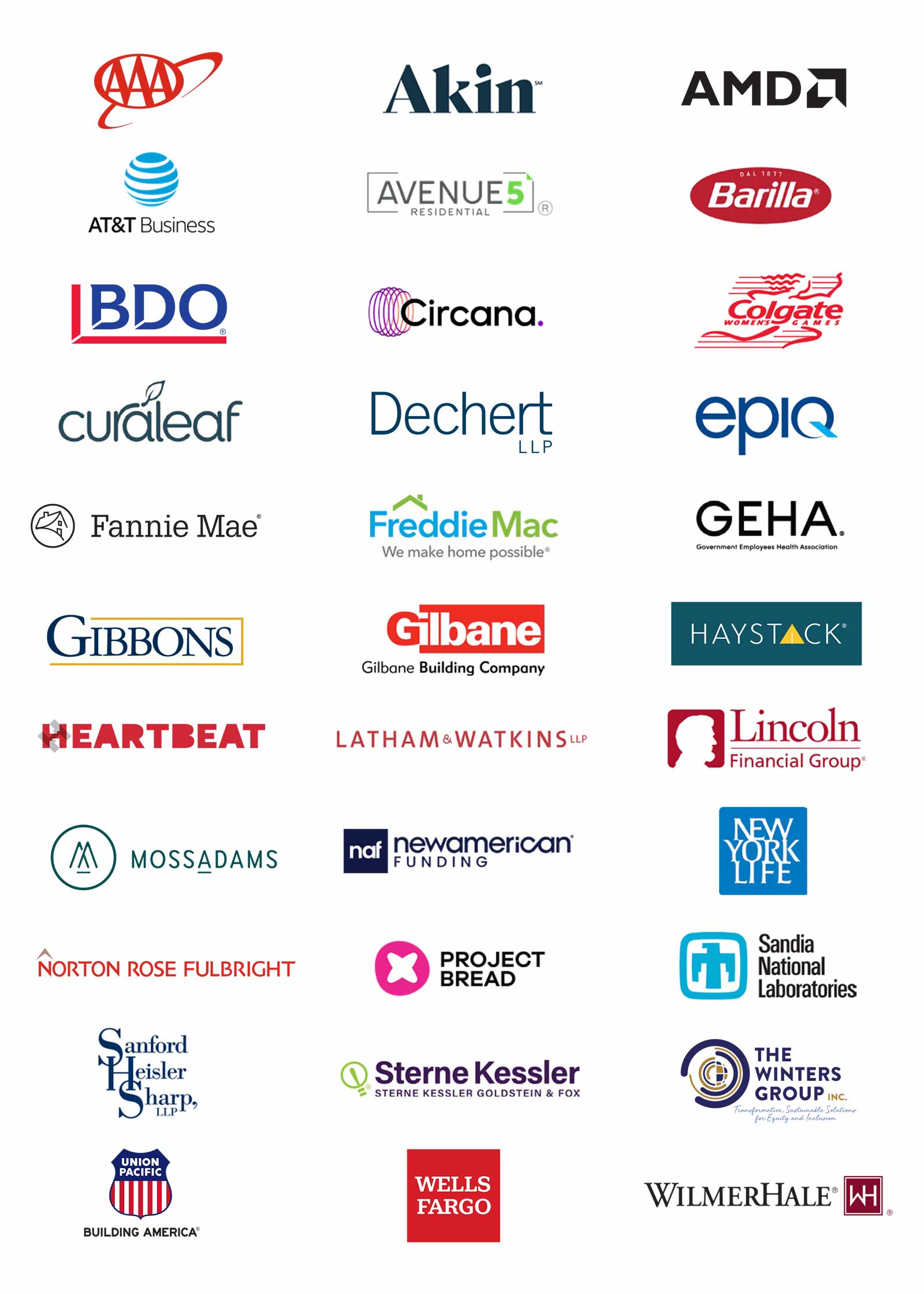
Title: 2024–25 Technologist-in-Residence Fellowship
Agency: Council on Foreign Relations
The Council on Foreign Relations is seeking applicants for its 2024–25 Technologist-in-Residence fellowship, sponsored by the Eric and Wendy Schmidt Fund for Strategic Innovation. The program enables early-and mid-career technologists with a demonstrated interest in foreign policy to spend ten months at the Council’s New York or Washington, DC, office researching and writing about issues at the intersection of technology and foreign policy or national security. This is an extraordinary opportunity for anyone looking to shape the national conversation on the connection between U.S. foreign policy and emerging technologies.
Application Deadline
Applications are open through February 28, 2024.
How to Apply
Visit www.cfr.org/fellowships/technologist-residence for more information.
Profiles in Diversity Journal Job Board
By Traci Wade, Group Vice President, Global Diversity & Inclusion, Oracle

The tech sector has long been known for a lack of women and minority representation, particularly in senior leadership positions. Within the industry, for instance, only 52 women are promoted to manager for every 100 men. However, at Oracle, there is hard work and promise for progress in the form of the Oracle Women’s Leadership (OWL) community, which is helping women across the company, supporting skills development and creating networks that have meaningful impact.
Established in 2006 as a grassroots effort, OWL has grown to more than 200+ community leaders across 113 locations globally, hosting 263 events that reach over 20,000 employees. OWL’s mission is to develop, engage and empower current and future generations of Oracle women leaders to foster an inclusive and innovative workforce.
Here are three employee stories, which provide a small snapshot of how Oracle’s OWL is taking flight, driving meaningful impact both inside Oracle and in the communities where we work and live.
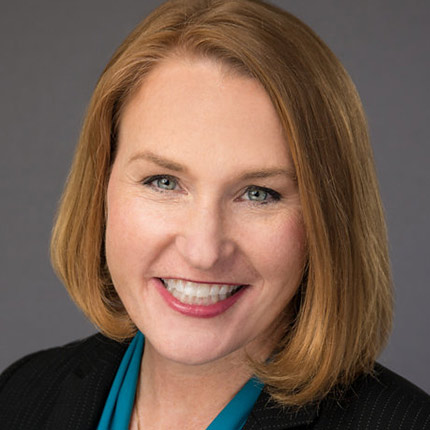
OWL’s mission, for members like Susan Miller, the senior director technical oversight & reporting, Oracle Global Product Security, has come alive, making a big difference in her career at Oracle and in her community. Susan shared that “OWL’s offerings, like the Mentoring Circle programs, provide opportunities to build new dynamic relationships and skills,” which gave her the “confidence to excel in areas like executive presentations and speaking to large employee audiences on important topics like security assurance with AI and machine learning.”
The skillset Susan gained through OWL has extended into her community, where she knew she could use her expertise to make a difference. Her mentors identified that she could be a resource to the local business chamber and in short order, she got happily involved. As a board member, she has contributed in many ways, including as “a moderator and panelist while also providing valuable advice and connecting local businesses with tech solutions to help them grow.”
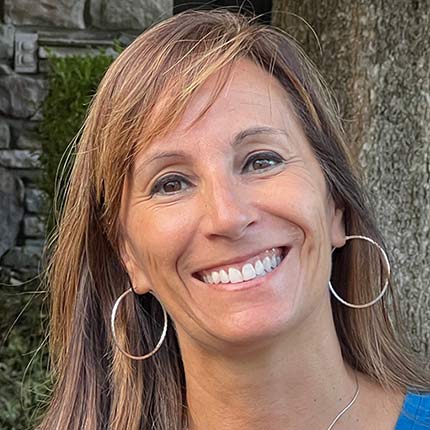
For other members, like Daniela Catino Bancora, vice president, global incentive compensation at Oracle, OWL has taught her to go “beyond her comfort zone, to seize opportunities and jump to the occasion!” But also, when it comes to advice and mentorship, OWL understands that succeeding at work and home not only requires skills development, it requires taking care of our holistic wellbeing as well.
A recent event, sponsored by OWL’s Rocklin community, highlighted how diet, rest and stress affect our lives in myriad ways and the solutions we can adopt to mitigate these daily stressors. Daniela explained that the most rewarding aspect of the event for her was understanding how “seemingly little changes (healthier snacks, a little more rest, short consistent workouts) accumulate over time, adding up to help us perform better at work, make us better in our personal lives and, in turn, make us feel better about ourselves overall.” Simply put, OWL’s members understand the challenges women face at work and at home are intricately interconnected and how we can do better, for both today’s women and future generations.

When Sharon Kolarac Hein, CSS strategic accounts delivery director, joined Oracle in 2011 she was essentially embedded with her customers to help them solve problems in real time. The downside was not being able to spend more time with her team in-person, as most meetings needed to be virtual. Sharon remembers feeling like she “needed a greater sense of belonging, reading about OWL and reaching out to find out more.” What happened next clearly had an impact, with Sharon not only joining OWL but suggesting a greater presence of the community in Pittsburgh, PA. Shortly after, she took on the position of local Oracle’s Women’s Leadership Group Community Lead.
In her role at OWL, Sharon has been focused on helping advance the “pay it forward” aspect of OWL’s mission by enhancing employee leadership and professional skills, using a mix of programs and activities. Outside of Oracle, the Pittsburgh OWL team has taken a leading role with local non-profits, including mentoring local women who are unemployed or underemployed to help uplift their talents and connect them with professional opportunities. For Sharon, this work has given her the “sense of purpose and fulfillment” she was searching for at the beginning of her career. “I’m so glad I raised my hand and took the leap,” she said.

Traci Wade
As Oracle’s Vice President and Global Head of Diversity & Inclusion, Traci Wade leads programs that build awareness of the business impact and value of a diverse and inclusive culture at Oracle. She engages with senior leadership in creating and supporting strategies that infuse and elevate a culture of inclusion and equity.
She established Oracle’s first diversity and inclusion team in 2009. Since then, Traci has become a strategic thought leader and subject matter expert on diversity and inclusion.
Traci has received recognition and awards for her commitment and success in leading Diversity & Inclusion corporate efforts, including being named a 2021 Profiles in Diversity Journal Women Worth Watching, 2017 Top Diversity and Inclusion Executives in Corporate America by Black Enterprise Magazine, Bridging the Gap Award in 2015 by San Francisco African-American Chamber of Commerce, Corporate Champion of the Year in 2012 by Black Data Processing Associates, Rising Star at the Women of Color STEM Conference in 2013 and Outstanding Corporate Contributor by Black Data Processing Associates in 2013.

The 3rd Annual Native American/Indigenous Leadership Awards PDJ Salutes a New Class of Native American/ Indigenous Leadership Award Winners
For more than two decades, Profiles in Diversity Journal® has honored outstanding individuals who have forged new paths. These individuals have overcome challenges, mentored others, advanced diversity and inclusion in the workplace and the community, and excelled in their chosen professions. PDJ is again honoring Native American/Indigenous leaders with our third annual Native American/ Indigenous Leadership Awards.
The profiles that appear in this issue recognize and celebrate the talents, hard work, and impressive achievements of the Native American/Indigenous Leaders we honor on the following pages. Each award recipient provided us with answers to some interesting questions, along with an essay, that will give you, our readers, a chance to better know these multitalented and trailblazing individuals.
Welcome to PDJ’s third Native American/Indigenous Leadership Awards.
2023 Native American/Indigenous Leadership™ Award Winners
- Akin – Jenny Patten Magallanes – Counsel
- Brownstein Hyatt Farber Schreck – Affie Ellis – Shareholder
- Robins Kaplan LLP – Casey L. Matthiesen – Attorney
- Union Pacific Railroad – Desrié Valdez – Sr. Manager Technical Training
- Union Pacific Railroad Company – Marsha Woodard – Sr. Manager Law



